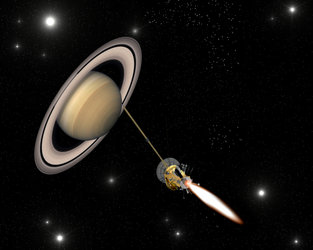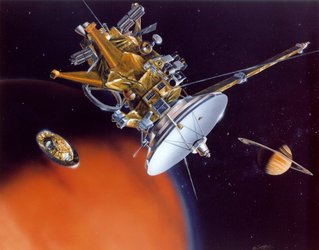Accept all cookies Accept only essential cookies See our Cookie Notice

About ESA
The European Space Agency (ESA) is Europe’s gateway to space. Its mission is to shape the development of Europe’s space capability and ensure that investment in space continues to deliver benefits to the citizens of Europe and the world.
Highlights
ESA - United space in Europe
This is ESA ESA facts Member States & Cooperating States Funding Director General Top management For Member State Delegations European vision European Space Policy ESA & EU Space Councils Responsibility & Sustainability Annual Report Calendar of meetings Corporate newsEstablishments & sites
ESA Headquarters ESA ESTEC ESA ESOC ESA ESRIN ESA EAC ESA ESAC Europe's Spaceport ESA ESEC ESA ECSAT Brussels Office Washington OfficeWorking with ESA
Business with ESA ESA Commercialisation Gateway Law at ESA Careers Cyber resilience at ESA IT at ESA Newsroom Partnerships Merchandising Licence Education Open Space Innovation Platform Integrity and Reporting Administrative Tribunal Health and SafetyMore about ESA
History ESA Historical Archives Exhibitions Publications Art & Culture ESA Merchandise Kids Diversity ESA Brand CentreLatest
Space in Member States
Find out more about space activities in our 23 Member States, and understand how ESA works together with their national agencies, institutions and organisations.
Science & Exploration
Exploring our Solar System and unlocking the secrets of the Universe
Go to topicAstronauts
Missions
Juice Euclid Webb Solar Orbiter BepiColombo Gaia ExoMars Cheops Exoplanet missions More missionsActivities
International Space Station Orion service module Gateway Concordia Caves & Pangaea BenefitsLatest
Space Safety
Protecting life and infrastructure on Earth and in orbit
Go to topicAsteroids
Asteroids and Planetary Defence Asteroid danger explained Flyeye telescope: asteroid detection Hera mission: asteroid deflection Near-Earth Object Coordination CentreSpace junk
About space debris Space debris by the numbers Space Environment Report In space refuelling, refurbishing and removingSafety from space
Clean Space ecodesign Zero Debris Technologies Space for Earth Supporting Sustainable DevelopmentLatest
Applications
Using space to benefit citizens and meet future challenges on Earth
Go to topicObserving the Earth
Observing the Earth Future EO Copernicus Meteorology Space for our climate Satellite missionsCommercialisation
ESA Commercialisation Gateway Open Space Innovation Platform Business Incubation ESA Space SolutionsLatest
Enabling & Support
Making space accessible and developing the technologies for the future
Go to topicBuilding missions
Space Engineering and Technology Test centre Laboratories Concurrent Design Facility Preparing for the future Shaping the Future Discovery and Preparation Advanced Concepts TeamSpace transportation
Space Transportation Ariane Vega Space Rider Future space transportation Boost! Europe's Spaceport Launches from Europe's Spaceport from 2012Latest

Cassini and Huygens
Thank you for liking
You have already liked this page, you can only like it once!
In December 2004, after a seven-year journey as part of the international Cassini–Huygens mission to Saturn, ESA’s Huygens probe separated from NASA’s Cassini orbiter to make a lonely one-way voyage to Titan, Saturn’s largest moon.
Just days later, on 14 January 2005, as the world watched breathlessly, Huygens plunged into Titan’s dense atmosphere, deployed parachutes and then spent a leisurely two and a half hours descending to the surface, transmitting scientific data the entire time, which was relayed by Cassini back to NASA’s 70 m-diameter deep-space network on Earth.
At 12:34 GMT that day, Huygens landed with a bounce and confirmation was received at ESA’s mission control centre in Darmstadt, Germany, with the first data signals arriving at 16:19 GMT.
That afternoon, the Huygens Spacecraft Operations Manager, Claudio Sollazzo, was watching intently in the Main Control Room for the first data to arrive.
When the signal came in, a loud cheer went up and the success of Cassini and Huygens was transmitted worldwide by the gathered media.
Titan remains one of only two moons ever to receive landers, and the descent still marks the most distant landing achieved by humanity.
On 15 September 2017, Cassini will dive to destruction into Saturn’s atmosphere, ending a hugely successful mission that has generated a wealth of scientific data that will be studied for many years to come.
-
CREDIT
ESA/J.Mai -
LICENCE
ESA Standard Licence

Cassini-Huygens Poster

Cassini-Huygens at Saturn

Artist's impression of Cassini-Huygens closing in on Saturn

The Huygens probe separating from the Cassini spacecraft















 Germany
Germany
 Austria
Austria
 Belgium
Belgium
 Denmark
Denmark
 Spain
Spain
 Estonia
Estonia
 Finland
Finland
 France
France
 Greece
Greece
 Hungary
Hungary
 Ireland
Ireland
 Italy
Italy
 Luxembourg
Luxembourg
 Norway
Norway
 The Netherlands
The Netherlands
 Poland
Poland
 Portugal
Portugal
 Czechia
Czechia
 Romania
Romania
 United Kingdom
United Kingdom
 Slovenia
Slovenia
 Sweden
Sweden
 Switzerland
Switzerland

























